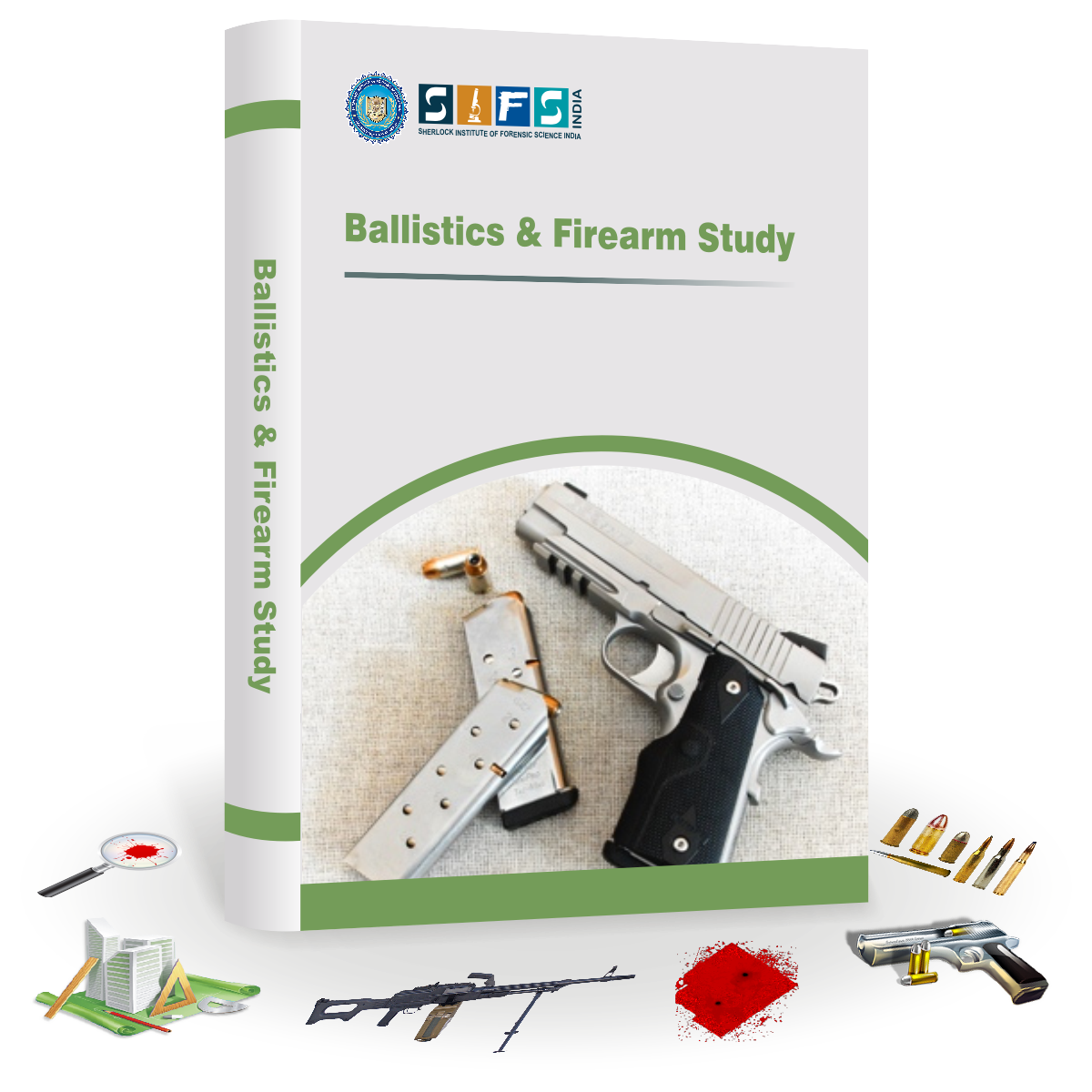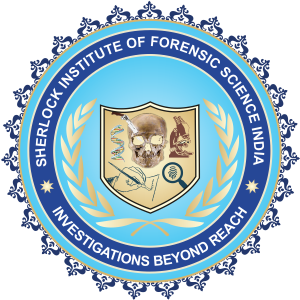MODULE 1 - BALLISTICS AND FIREARM
In this introductory module, you will learn about the fundamentals of ballistics, its historical development, branches (internal, intermediate, external, and terminal ballistic), the process of manufacturing firearms, and its various components, including the barrel, action, stock, firing pin, breech face, chamber, extractor, ejector, bore, choke, lead, muzzle, trigger, sear, and magazine. The module also covers the classification of firearms based on bore characteristics, loading features, action mechanisms, handling conditions, and velocity.
MODULE 2 - AMMUNITION
This module covers the history and types of propellants and their significance in ballistic applications, the study of projectiles, including lead pellets, and various types of jacketed bullets such as paper-patch, wire, metal patch, electroplated, gas-check, armor-piercing, tracer, incendiary, dum-dum, hollow point, and aluminum-tipped bullets.
You will be introduced to the concept of crannelures, primer's diverse compositions, including boxer and berdan types, along with percussion caps, cartridge cases or shells (composition, shapes, types, and head stamps), and the roles and types of wads.
MODULE 3 - MUZZLE LOADING FIREARMS
In this module, you will learn about the historical and technical aspects of muzzle-loading firearms, the percussion cap, a crucial component in the ignition system, and the projectile charge, wads, and powder charge, highlighting their roles in the functioning of muzzle-loading firearms. You will also gain insights about the mechanism of these firearms, along with the sequential interactions of components during firing and how these contribute to forensic investigation.
MODULE 4 - MECHANISM OF FIRING
This module focuses on an introductory understanding of various firearms within a forensic context, including shotguns, pistols, rifles, revolvers, and machine guns, and their firing mechanisms. A foundational understanding of each type, including their unique characteristics and applications, will be covered. Shotguns are widely used for hunting and sport shooting, whereas pistols are more compact and versatile. Rifles are known for their accuracy and range, whereas revolvers are known for their revolving mechanism. Machine guns, on the other hand, are known for their automatic firing capability.
MODULE 5 - INTERNAL BALLISTICS
In this module, you will learn about firearm mechanics and internal ballistics, the ignition of propellants, the phenomenon of hang fire, the pressure space curve during firing, factors influencing muzzle velocity, short start pressure, velocity, space curve, the theory of recoil, Piobett's Law, and Le Due's Formula. The relationship between these elements is a valuable source for understanding the scientific principles governing firearm function and behavior.
MODULE 6 - EXTERNAL BALLISTICS
This module covers a foundational understanding of exterior ballistics (the motion of a projectile in the air), the equations governing the motion of projectiles for determining the velocity of the projectile, the principal problems in exterior ballistics, and misfire, highlighting the potential issues during the ignition and discharge process that might arise due to a defect in the firearm.
MODULE 7 - TERMINAL BALLISTICS / FIREARM INJURIES
This module focuses on the wounding effects of projectiles (including factors like the target site, velocity, constructional features, and range) and the identification of firearm injuries (using indicators like pink coloration, blackening, tattooing, dirt rings, foreign material, charring, contusion, and specific wound characteristics).
The module further explores the evaluation of firearm injuries, including an in-depth analysis of wounds caused by various firearms, including pistols, revolvers, rifles, shotguns, muzzle-loading firearms, and zip guns; the concept of fatal injuries; extraordinary facts, difference between postmortem and antemortem injuries; and considerations related to determining the age of injuries.
MODULE 8 - IMPROVISED FIREARMS
In this module, you will learn about firearms with a focus on their classification, characteristics, historical evolution, and firing process. The classification includes essential components like the barrel, chamber, action, and lock, each playing a unique role in firearm functioning. The module also covers a deep understanding of the firing process and the evaluation of firearms, including a detailed analysis of their components.
MODULE 9 - MISCELLANEOUS
This module focuses on specialized firearm categories like freak firearms and toy firearms, providing insights about their distinctive characteristics and applications. The concept of penetration power is covered, which addresses the ability of the firearm to penetrate various materials. Finally, you will learn about the examination of conversion barrels, which can alter a firearm’s caliber or functionality. This module will equip you with the knowledge to assess and interpret forensic evidence related to these specialized firearm categories accurately.
MODULE 10 - PROBLEMS AND LOCATION
This module highlights the challenges involved in firearm identification, including issues that arise from fired ammunition, firearm injuries, medico-legal complexities, muzzle loaders, live ammunition, and fraudulent manipulation activities. You will then learn about the location aspect, including firearm-related incidents, from the perspectives of victims, culprits, and the scene of occurrence.
MODULE 11 - COLLECTION AND PRESERVATION OF FIREARM EVIDENCE
In this module, you will learn about investigations involving firearms, including cartridge cases, the characteristics of bullets, slugs and slots, clothes worn during an incident, glass fragments, discharge residues, injuries sustained, bullet holes, and test exhibits. All these provide valuable information and play a crucial role in reconstructing the sequence of events, identifying the weapons involved, and establishing the trajectory and impact dynamics.
MODULE 12 - EXAMINATION OF FIREARM EVIDENCE
In this module, you will learn about the principles of firearm examination, identification features associated with bullets and cartridges, test exhibits including ammunition, no firearms, defective firearms, damaged firearms, high-velocity rifles, and their recovery and cleaning. The examination process involves techniques like spectroscopy, comparison microscopy, comparison camera, stereography, photographic comparison, scanning electron microscopy, periphery camera, scanning electron microscope, and elemental analysis methods like NAA, AAS, and AES, along with methods to restore erased serial numbers.
MODULE 13 - GUNSHOT RESIDUES
This module covers the role of gunshot residue in forensic investigations, types of residues (black powder and smokeless powder residues), methods to determine the nature and location of GSR, dry and wet methods of collecting GSR, and the collection of organic residue.
You will also learn about GSR evidence evaluation techniques, like visual examination, infrared photography, soft X-ray radiography, dermal nitrate tests, Walker's test, Harrison and Gilroy's test, Price's spot test, Greiss test, neutron activation analysis (NAA), flame-less atomic absorption spectroscopy (F-AAS), scanning electron microscopy (SEM), and X-ray fluorescence (XRF).
MODULE 14 - SPECIAL SITUATION
This module focuses on special cases encountered by forensic investigators, like damaged cartridge cases, bullets, burnt projectiles, smooth barrel marks, buckshots, and pellets, as well as instances involving no firearm. In-depth examination and interpretation of these elements helps forensic investigators reconstruct events and establish the evidential significance of the findings.
MODULE 15 - EXAMINATION OF RANGE OF FIRE
In this module, the concept of range of fire in firearm-related incidents is discussed, including a detailed analysis of various factors like muzzle patterns, burning, scorching, blackening, tattooing, powder residues, metal particles, wad distribution, pellet patterns, and the direction of wounds. Accurately estimating the direction of fire helps investigators determine the circumstances surrounding the discharge of the firearm.
MODULE 16 - AUTOMATED IDENTIFICATION SYSTEM
This module explores the most commonly used automated identification systems, like the National Integrated Ballistics Information Network (NIBIN) and Integrated Ballistics Information (IBIS) systems. These systems utilize a comprehensive database and imaging technology to analyze and match ballistic evidence from different crime scenes. You will gain an understanding of historical evolution, working principles, examination procedures, and limitations due to the quality of input data in both systems.
MODULE 17 - CRIME SCENE RECONSTRUCTION
This module covers the process of crime scene reconstruction and the need for proper documentation, including photography of the crime scene, the collection of relevant evidence, including arms and ammunition, as well as the victim's clothing, the hypothetical conjecture and analysis of the collected evidence, a medico-legal report that acts as an essential document providing professional assessment of injuries and forensic findings, and the theory formulation of the crime scene for a more accurate reconstruction of the events surrounding the crime.
MODULE 18 - COURTROOM PRESENTATION OF EVIDENCE
In this module, you will learn the role of the expert witness, opinions on exhibits, presentation of experimental data to support forensic analysis, illustrations including those of cartridge cases, bullets, and the range of a firearm, medical evidence to strengthen the expert's testimony, the language of the expert to ensure clear communication during court proceedings, and the art of cross-examination to discredit, clarify, prove inadequacy, or elicit additional evidence from the expert.






